The BPL recently purchased an annotated volume from the library of the Italian author and magistrate Giuliano Guizzelmi (1446-1518).¹ A minor, if interesting figure in the history of renaissance Italy, Guizzelmi is mostly remembered as a jurist, diary-keeper, and pious chronicler of miracles attributed to the shrines and holy relics of the Tuscan city of Prato.²
Born in Prato to an affluent merchant family, Guizzelmi received a university education before embarking on a successful career in law. For nearly 40 years, he traveled through the territories surrounding Florence, working on short-term assignments under a varying cast of government officials. Despite his itinerant lifestyle, Guizzelmi remained a life-long reader who managed to build a substantial collection of legal texts and classical literature.³
Books from his personal library -- now dispersed -- preserve evidence of careful reading and scholarship. In particular, Guizzelmi's hand-written annotations show keen attention to detail and an interest in extracting keywords and phrases for later retrieval. Within each of the three separately printed editions that make up the newly-acquired BPL volume, Guizzelmi corrects and annotates both text and printed commentary. He brackets and underlines passages of interest, copying important words and phrases into the margins, providing cross-references, and adding in his own comments. To the modern reader, these annotations illuminate Guizzelmi's training as a scholar; we can see what he considered important enough to mark down, following along as he distills long passages into one or two important keywords and marking them for future retrieval.
In addition to his annotations, Guizzelmi personalized his books by leaving lengthy, colophon-like, opens a new window inscriptions to mark the completion of his work on them. Particularly in the new BPL volume, these inscriptions provide a fascinating, diary-like record of Guizzelmi's reading habits, along with vivid notes on one of the most traumatic catastrophes of his day.
At the end of the 1511 edition of Sallust’s works, pictured below, Guizzelmi first commemorates his various uses of the book: Legi, notavi, reposui, et finivi (Read, annotated, retained, and finished). He then identifies himself as Iulianus Ghuzzelmus Pratensis, utriusq[ue] iuris doctor minimus (Giuliano Guizzelmi, of Prato, doctor of both laws [i.e. canon and civil law]), in Burgo S[an]c[t]i Sepulchri, Anno Salutiferae Incarnationis .MDXiij. Mensis decembris. Die Nono: hora .xviij. Die veneris. Deo Gr[ati]as Amen (in Sansepolcro, opens a new window, in the year of the saving Incarnation 1513, the 18th hour of Friday, the ninth day, month of December. Thanks be to God, amen)
Guizzelmi's inscriptions at the end of Statius's works are even more detailed. Here he includes three separate notes, which range from strict memorialization of his interactions with the book to a jarring description of recent atrocities in the ongoing War of the League of Cambrai.
In the first of the three notes (below), Guizzelmi simply identifies himself as purchaser, mentioning that the price has been recorded in meo codice rationum ("in my account book.") Interestingly, this account book still survives and is in the collections of the Biblioteca Roncioniana, Prato (Codex 759).
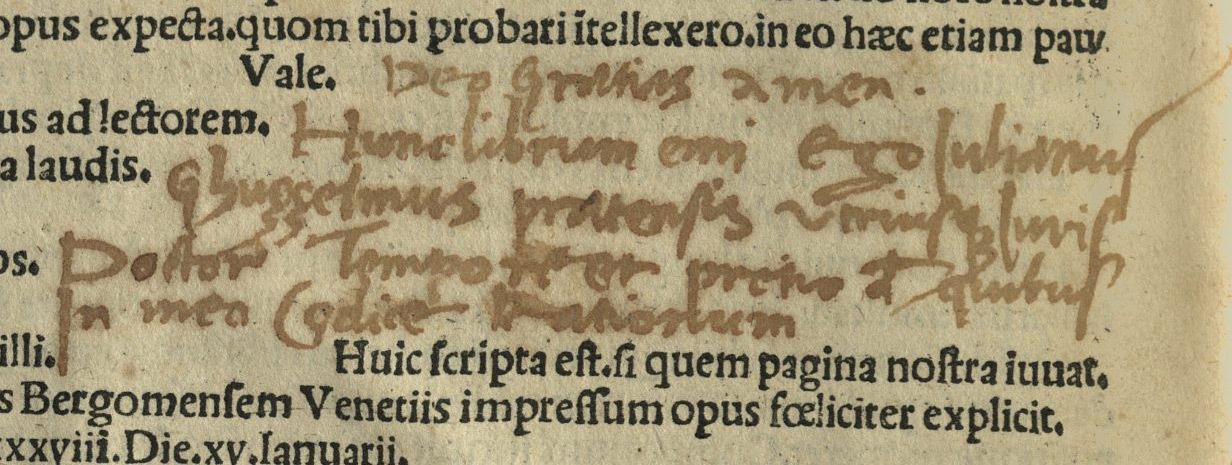
In the second note, at the bottom of the same page, he provides a more formulaic note about time and place, dating his inscription to Arezzo, during the 16th hour on Thursday, October 14th, 1512 (Aretij. Anno salutiferae Inca[r]nationis. MDXij. Mensis Octobris Die .xiiij. Die Iovis. Hora .xvj. Deo Gratias Amen).
In the final, and most richly detailed note, Guizzelmi first records the fact that he has eagerly read and annotated the book. He identifies himself again, repeating the year of 1512. Here, however, Guizzelmi veers away from the formulaic structure of his earlier notes. Six weeks earlier, on August 29th, Spanish armies had sacked the city of Prato, opens a new window en route to Florence. Guizzelmi -- a native of Prato -- reflects on these events, lamenting the destruction of his city and decrying the cruelty of the Spaniards in vivid terms. He describes the burning of Prato and the torture of civilian men and women, finally comparing the scene to the destruction of Troy, Carthage, and Jerusalem. He then repeats the date of the inscription a third time, finally concluding with a series of pious invocations.
Search tips
Many of the other early printed books in the BPL's collections are also annotated by early readers. For example, to find other incunables that have been annotated, you can do an advanced search for genre: "incunabula" AND genre: "marginalia."
- This volume contains 1. Sallust. Opera (Venice: Tacuinus, 1511) -- 2. Guarinus Veronensis. Paralelia ex Plutarcho in latinum conuersa (Brescia: Jacobus Britannicus, 1498; removed from ISTC ib01254000) -- 3. Statius. Opera (Venice: Petrus de Quarengiis, Bergomensis, 1498/99; ISTC is00694000)
- His two principal works collect miracles attributed to the Virgin Mary’s girdle, opens a new window -- kept at the Prato Cathedral -- and to the Santa Maria della Carcera, a painting of the Virgin and Child now housed in a basilica erected in its honor, opens a new window. For a detailed biography of Guizzelmi, along with an exploration of his collections of miracles, see Maniura, Robert. Art and Miracle in Renaissance Tuscany. Cambridge: University Press, 2018.
- Books from Guizzelmi's library can be found in library collections around the world, including the BPL (Q.407.22 nos.1-3), the Bancroft Library at Berkeley (II8 .B7 B6 1485g), Cambridge University (Inc.5.B.8.19[2023]), and Glasgow University (Sp Coll K.T. f1)

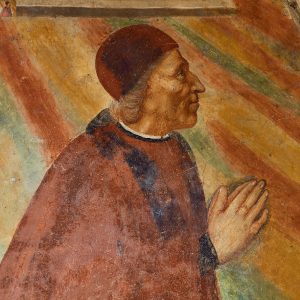
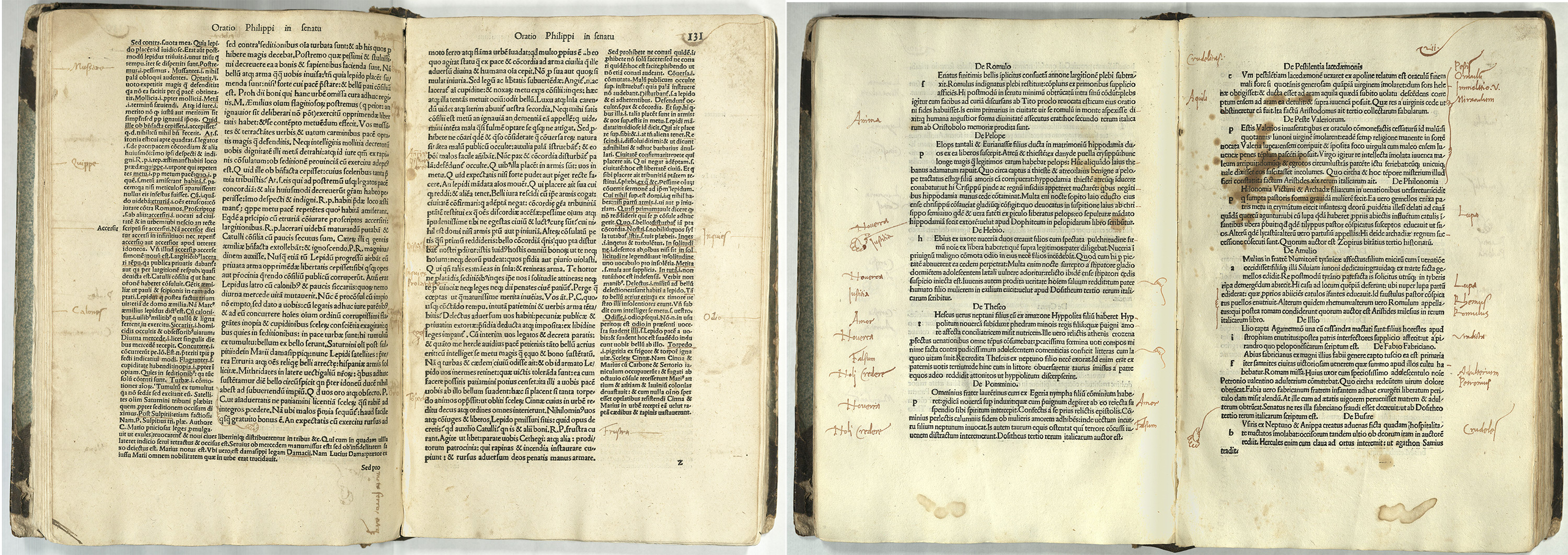
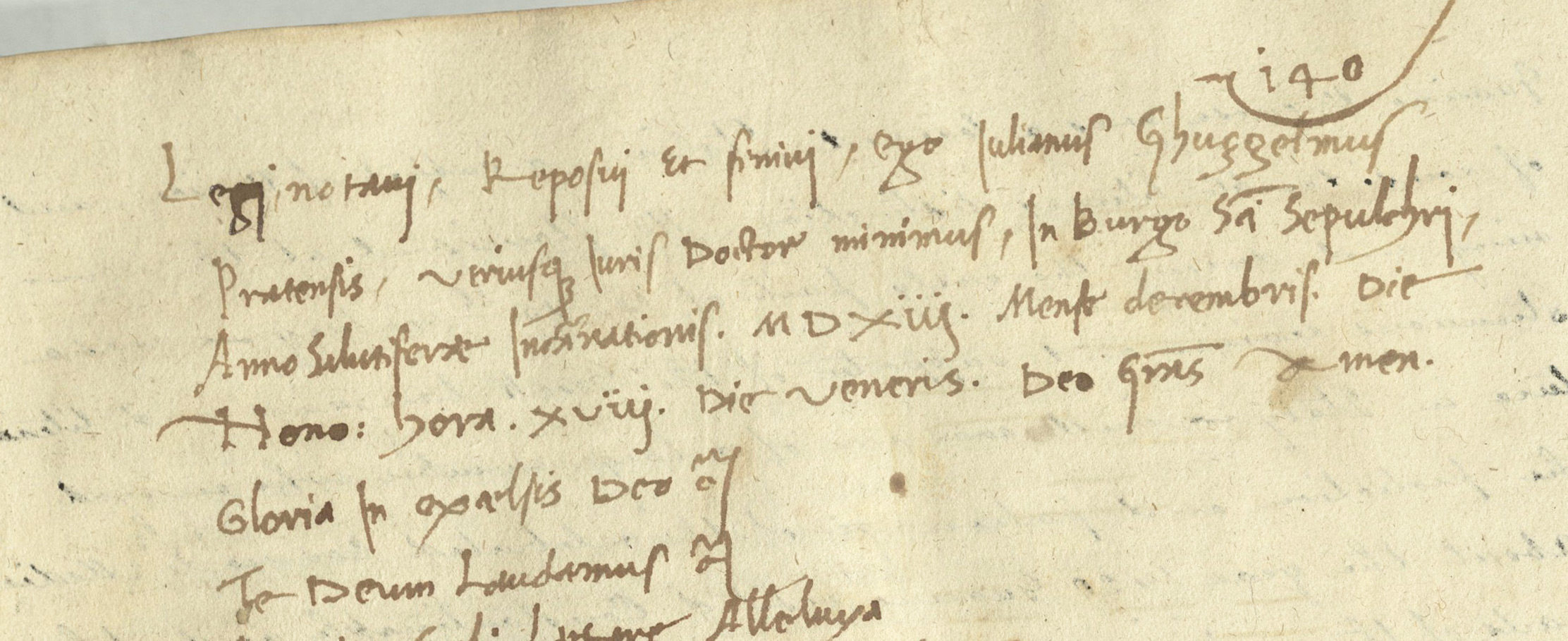

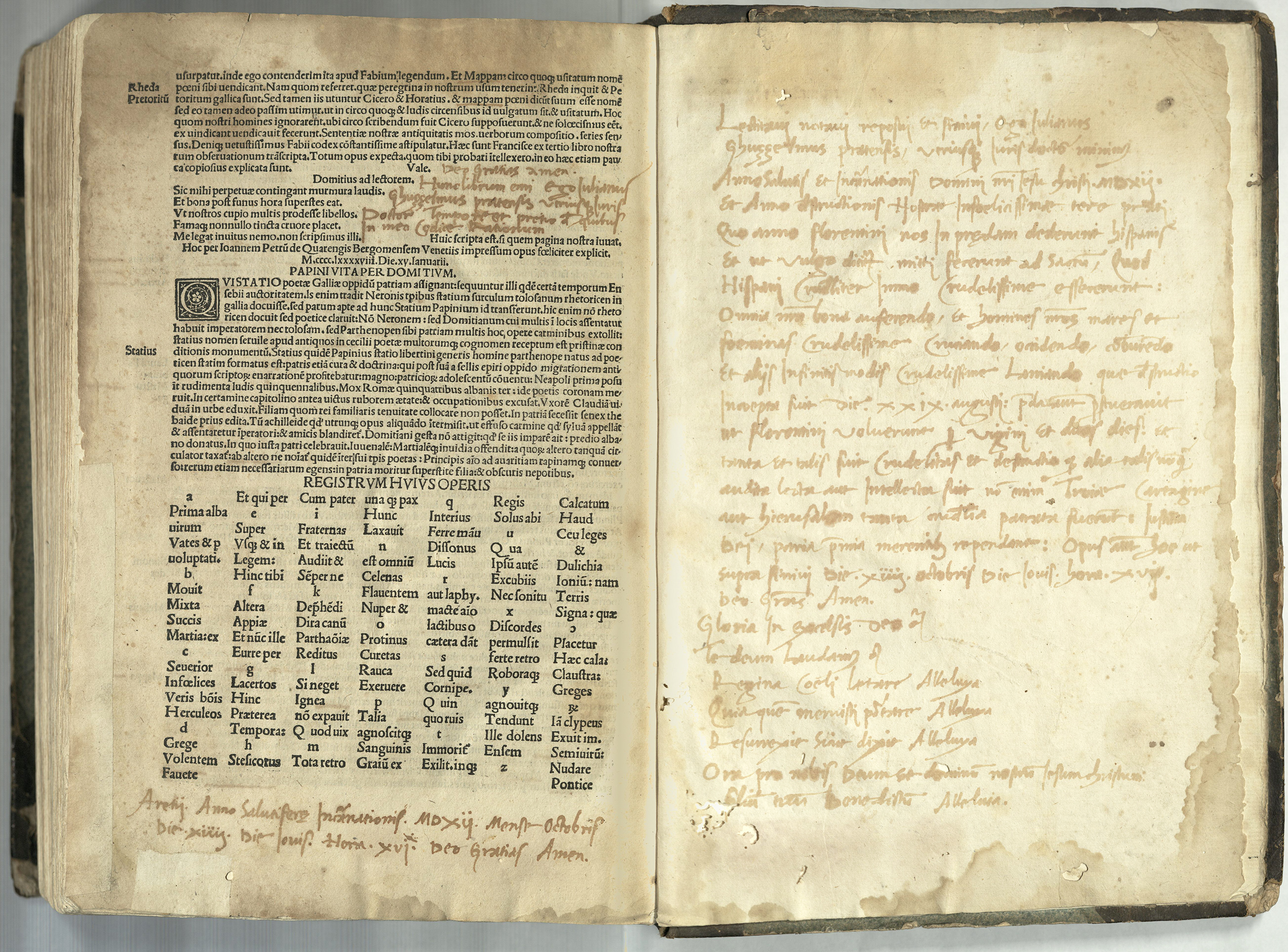

Add a comment to: Notes From A Lost Renaissance Library